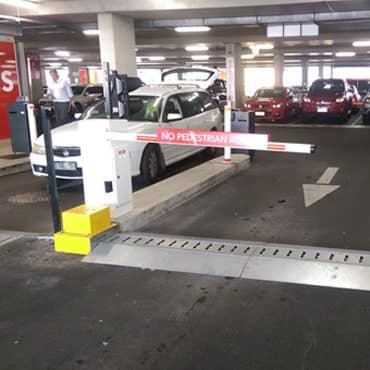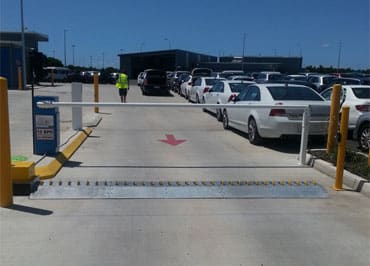Case Study | Deflating Experience for Rental Car Thieves

NEWS REPORT: A man is in hot water after allegedly driving a rental car at speeds up to 126kph in a wild police pursuit across the Mid North Coast. The car, a rental which had allegedly been stolen from Rutherford, was extensively damaged. Bellingen Shire Courier-Sun 23 Nov 2016
Unfortunately, this scenario is all too familiar for many Australian rental car companies.
Profit-motivated theft for scrap rackets and the black market trade in car parts account for around half of all non-recovered stolen vehicles. Car theft has become commonplace with rental car companies being prime targets – one company reported it lost as many as 40 vehicles a year from one of its sites.
In many cases lack of access control and/or effective supervision contributes to high theft rates in car parking areas. These deficiencies are principally due to economics however the cost of vehicle repairs, replacement and loss of future rental earnings now far outweigh any cost of securing their cars.
How some operators are defending their rental car fleet against thieves
Theft prevention involves controlling the parking area’s points of entry and exit – typically that means gated entrances and exit lanes manned by security guards, however some businesses are turning to automated vehicle access control technologies to provide a more efficient and cost-effective alternative.
For example, in an effort to curb car park theft several airport car rental operators have taken tough measures to discourage even the most brazen thieves. This has involved installing a combination of boom gates and tyre spikes in vulnerable locations:
-
- Vehicle storage carpark and car detailing area
In this area boom gates and tyre spikes are controlled by staff using remote radio transmitters.
-
-
- Airport car pick up exit – the rental car pick up process involves the customer collecting the car from the vehicle bay and driving to the exit where the attendant checks drivers licence and vehicle details. Once satisfied that the driver is the renter and the correct car has been collected the attendant uses a transmitter to lower the tyre spikes which automatically raises the boom pole when the spikes are fully closed.
-
Rotech has been supplying the Automatic Boom Gates/Sentinel CW Tyre Spikes combo for Australian rental car operators since 2012 – they have proven to be extremely effective in protecting vehicles from theft and a highly efficient method of controlling vehicle access to all types premises.
Sentinel CW Tyre Spikes are high security, high volume, fast acting barriers
- Featuring a high-torque DC motor these tyre spikes boast greater reliability and efficient operation for up to 2,000 operations a day.
- Made from heavy duty galvanised steel the robust Sentinel CW Tyre Spikes are built to disable even heavy vehicles, such as 20 tonne trucks.
- Manufactured to the highest quality, multiple interlocks stop spikes rising out of sequence and high vis bright yellow spikes provide increased safety.
Rotech Pedestrian Safety Recommendation
While the tyre spikes are highly visible, in situations where there are also people walking around the area where the spikes are, it is important to ensure additional safety measures are undertaken to protect pedestrians.
When considering using tyre spikes and boom gates to manage vehicle access Rotech strongly recommends installing a fully integrated boom gate/tyre spikes control system which incorporates traffic lights, safety beams, flashing lights and sirens to alert pedestrians that they are entering a dangerous area.
If you would like further information about this or other safety and security combinations for your premises call Alan Roberts on 07 3250 1123 or email info@rotech.com.au



